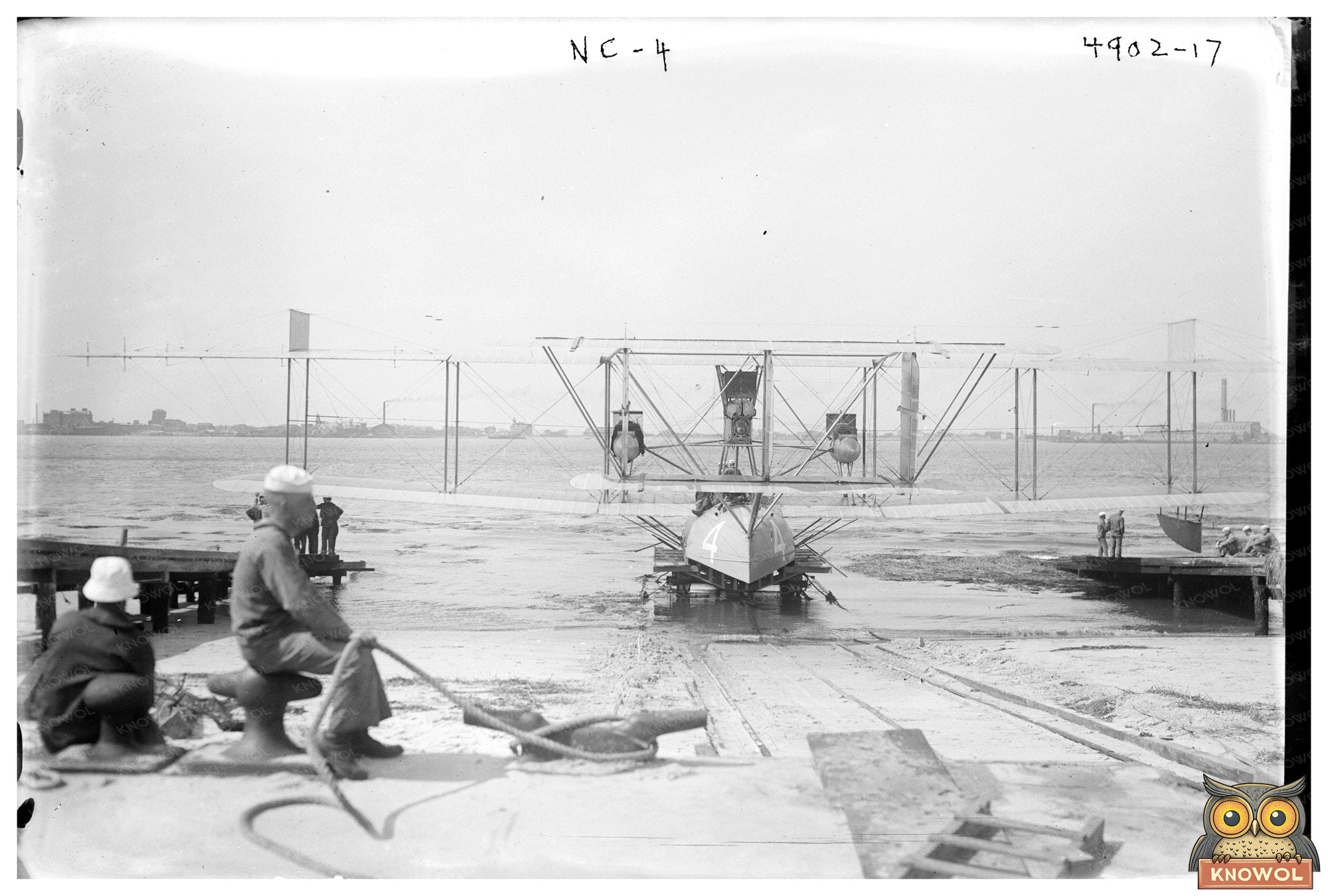


Historic NC-4: First Transatlantic Seaplane Flight
The photograph captures the NC-4, a significant aircraft in aviation history, which made its groundbreaking transatlantic flight in May 1919. This pioneering seaplane was the first to complete a nonstop flight from the United States to Europe, marking a monumental achievement in long-distance air travel. The successful journey began in New York, traversed the Atlantic Ocean, and concluded in Lisbon, Portugal, covering over 3,000 miles in 19 hours and 5 minutes. This accomplishment showcased not only the advancements in aircraft design but also the growing ambition of aviators to conquer international distances.
Built by the Glenn Martin Company, the NC-4 was part of a naval fleet aimed at demonstrating the viability of aircraft in military operations. The aircraft featured a biplane design and was equipped with four engines, underscoring the militarys pursuit of powerful and reliable machines for aerial transport during the post-World War I era. The 1919 flight of the NC-4 proved essential to the development of transatlantic airline routes and contributed to the establishment of air travel as an essential mode of transportation.
Photographed by the Bain News Service, this image serves as a historical record of an era defined by innovation and exploration in aviation technology. By capturing the achievements of the NC-4, this documentation not only tells the story of a remarkable flight but also highlights a pivotal moment in the evolution of air travel that laid the groundwork for modern aviation.

Historic NC-4: First Transatlantic Seaplane Flight
